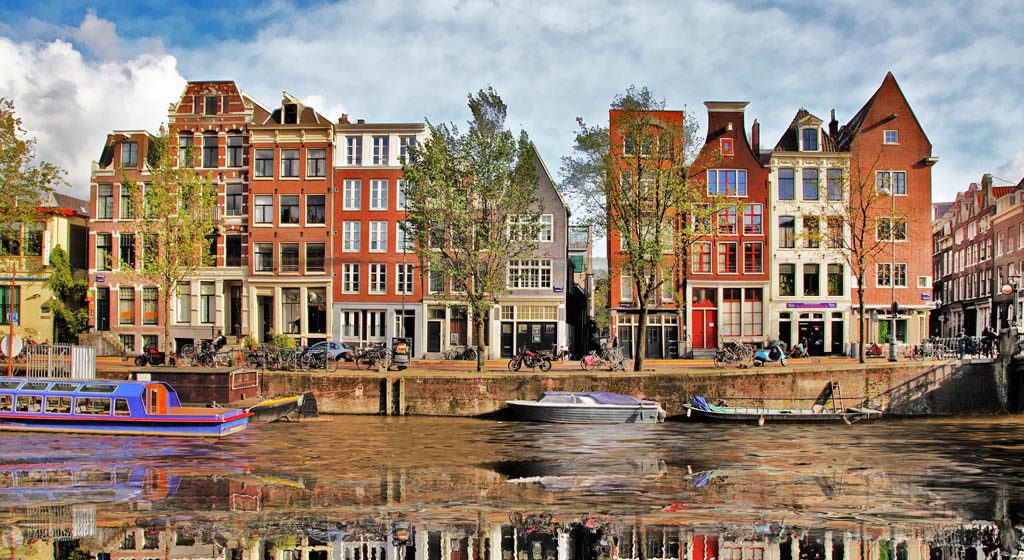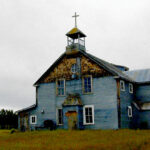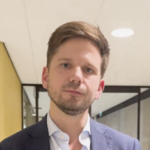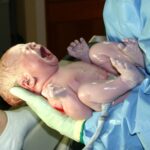Blog Post
The strange pull of the Old World
By Jonathon Van Maren
Over the past several weeks, I have had the extraordinary privilege of being able to give pro-life presentations (and several other lectures on various aspects of our current culture wars) in the Netherlands. I was given the opportunity by the Joseba Foundation, and have also been able to meet with a wide range of different pro-life organizations to exchange ideas about strategy, learn from their work, and share what we at the Canadian Centre for Bio-Ethical Reform have been doing in Canada. (I’ll be writing more about that later.) One of the reasons that I was so thrilled to be able to do some pro-life work in the Netherlands is because both my family and my wife’s family are originally Dutch.
This is where my family’s roots are. On a Saturday morning, I drove with my wife and daughter to visit the widow of my Opa’s brother and two of my cousins. She is the last surviving member of his family. After the visit, we spent some time walking the village of Waardenburg where my Opa Van Maren and his siblings grew up. Watching my little daughter play on the cobblestones of Stienbrick factory where her great-grandfather had played as a boy and her great-great-grandfather had once walked to work in the factory—the mossy cobblestones are all that is left of the buildings now–a line from Ecclesiastes came to mind: One generation passeth away, and another generation cometh: but the earth abideth for ever.
There was the little house where my great-grandfather Gijsbert Van Maren was born, the Sluishuis where he lived with his wife Jantje and their children after the war, the little school—now long since converted into a commercial building—that my Opa attended as a boy, and from the dyke we could look across the Waal river to Zaltbommel, where the tower of St. Martens Kerk soars over the city skyline. It was this place that my Opa left behind in 1953 to come to Canada with my Oma and their first (of eleven) children. You can see the Zaltbommel Bridge, too—it was bombed by the Germans during the war, and it was because my Oma’s father ending up working on the reconstruction of the bridge that my Opa met my Oma. In their nineties now, their love is an ever-present example for their many descendants.
We walked through the Waardenburg graveyard, too. It was a reflective time together as we walked from headstone to headstone, reading the names of Van Marens who had passed on before. Some of them I had briefly known, when they were old and I was young and visiting the Netherlands. Others I had never met, and knew only by the black-white-photos hanging on the walls of homes back in Canada and stories from my parents, aunts and uncles. It struck me, as I slowly moved through the cemetery, that the last time I visited this place fifteen years ago it had been with two of my Opa’s brothers. Now, they are both buried here as well. The realization made the weight of history suddenly feel like a solemn burden, and the silence there was heavy and pregnant with memory.
A few minutes away stands the small red-brick Waardenburg Castle, first built in 1265 by Rudolf de Cock. It was this castle, demolished in 1574 by the troops of William of Orange before being rebuilt in 1627, that gave the village its name. Count Louis of Nassau, the brother of the Silent Prince, was forced to smash his way in because the fierce widow who resided there—Catharina van Gelre, who was actually the illegitimate daughter of Karel van Gelre, a nobleman brought up under the guardianship of Charles the Bold and Emperor Maximilian I—was resolutely pro-Spanish and imperiously refused to surrender. The massive lock, it was said, never recovered from the invasion. By 1800 the castle entered the van Pallandt family, whom my grandfather would work for in the surrounding orchards before immigrating to Canada.
Waardenburg Castle was badly damaged during the Second World War and underwent a restoration between 2006 and 2009. It is still surrounded by a wide moat today, and black coots skimmed across the surface and a suspicious stork eyed us as it strutted through the nearby orchards. Back when my grandfather was a boy a baroness still lived here, and my cousin told us that the Van Maren boys would race down the path to the impressive stone entrance to ask her for candies, struggling to remember that they needed to snatch their caps off once they entered her presence. The Baroness van Pallandt actually visited my grandparents on their little houseboat just before they left the Netherlands for Canada. Four years later in 1957, the castle was declared uninhabitable, largely due to the destruction it sustained during the Nazi bombing of the Bommelse Brug. And it was this bridge that my maternal great-grandfather would be hired to work on, resulting eventually in his daughter—my Oma—marrying my Opa.
There is something about the Netherlands that feels familiar, even though I was not born here. The cities here are infinitely older than anything we have in the New World. Zaltbommel is over a thousand years old, and it has aged gracefully. It is the sort of place with a town square, and the sort of square that people still use. It has a beauty that is not decorative—the sort of thing that is so normal here that those who pass it every day have long since stopped noticing it. In front of the ancient church, some crocuses were pushing up through the carefully tended grass, and a few yellow daffodils nodded their heads lazily in the wind. In one of the omnipresent canals, a duck facing bottom-side up rippled past.
We drove through the countryside to Maren-Kessel, the tiny village that my family was named after during a time too far back to trace. Today it has scarcely 1,300 residents, and I noticed many “for sale” signs hammered into the neatly manicured front yards. The Dutch build solid, sturdy brick houses that are clearly intended to last, and their hip-roof farm buildings and stepped-roofs are instantly recognizable as being from somewhere, an enormous contrast with the sprawling McMansions that dot the Canadian countryside. Here and there, a lovely house has been morphed into an eyesore by a massive solar panel fastened to the roof, and the roads are lined by straight, orderly rows of trees. The pink blossoms were out, too. With the exception of the water, nature has been entirely subjugated here.
We headed for the little terminal where a ferry big enough for about a dozen cars would take us across the Maas back to Gelderland, where we were staying. As we pulled up, I spotted the first group of children we had seen all day, in a pasture behind a tall hedge the lines the back of a row of red brick houses. They were playing soccer, laughing, and one little blond girl was dodging to the side to peel off her jacket, flushed red even though it was cool out, tossing it on the grass. Some waterfowl watched them warily from nearby. The birds were out in full force, as the water has spilled from the rivers in over a dozen places and covered the fields and pastures. Trees rose from the waves, and they appeared somehow unflappable. It was not a battle with the sea, exactly, but there are certainly still skirmishes.
There is something about this country that feels like home. Perhaps it is the fact that my family’s history in North America is so recent, and that for nearly all of the great events of the twentieth century and far before, my family lived here. Their experiences were those of the Old World, not of the New. There is a bakery on my mother’s side of the family, for example, that was opened in 1887, only twenty years after Canada became a country. It is still in the family. The towns and villages where my relatives have their roots—and many are buried–were founded long before Europeans even discovered North America. Perhaps that is why re-crossing the ocean and rediscovering these things is always such an incredible experience for me.
For tradition, as G.K. Chesterton once put it, is so strong “that later generations will dream of what they have never seen.”









Beautiful and touching